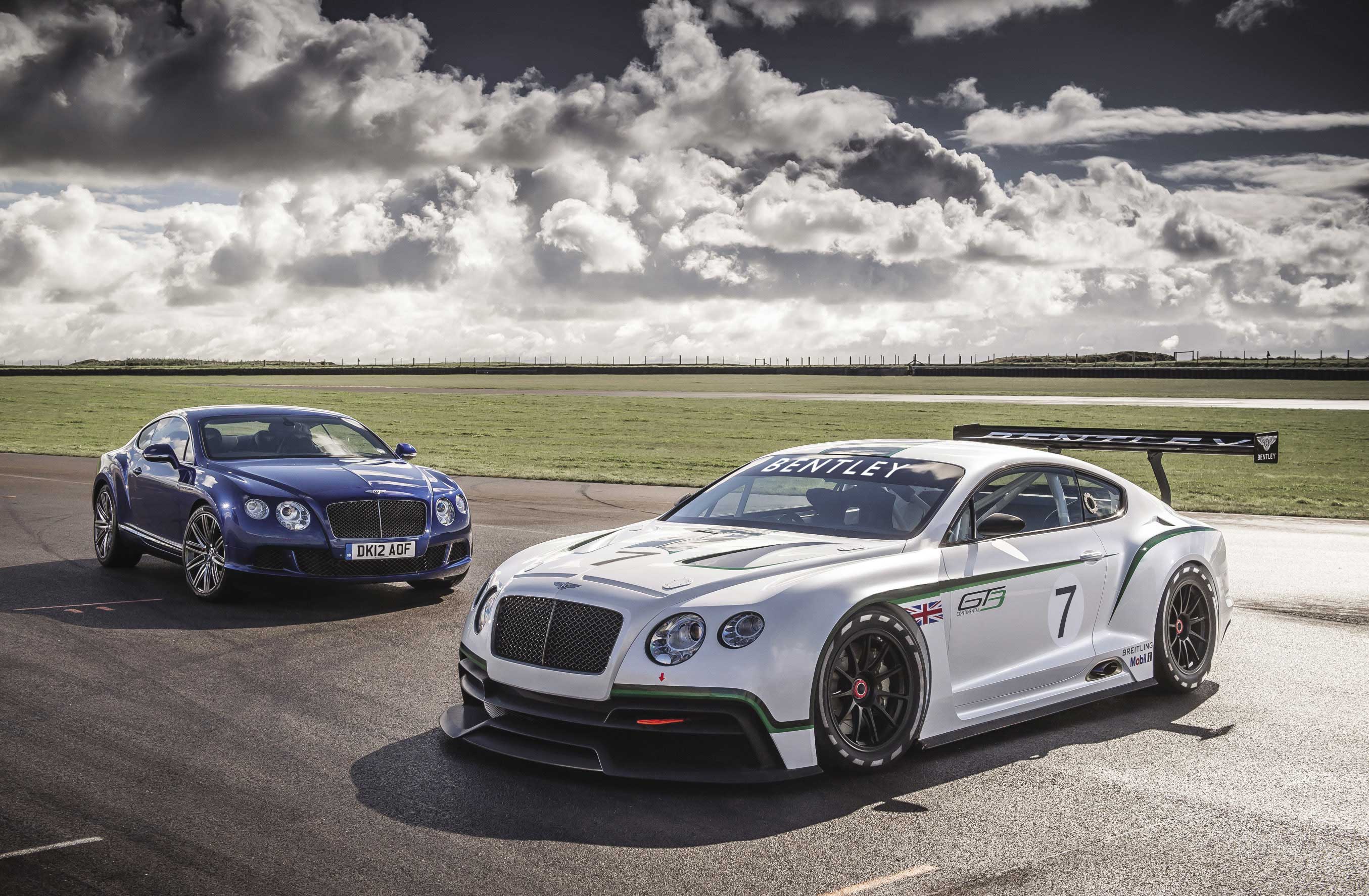
Bentley goes beyond the Grey Poupon
People love fast cars, always have, always will. It’s largely irrelevant whether the fast car in question is powered by a gas-guzzling V12, a fuel-sipping gas-electric hybrid or a lithium-ion battery pack – if it’s fast, people will want to drive it quickly. Very quickly. In-excess-of-posted-speed-limits quickly. This is human nature. The trouble is: the aforementioned speed limits and, more pointedly, public safety.
Here’s the conundrum, though: The modern automobile is imbued with so much performance and so much technology, it’s a case study in over-engineering. Take a moment to consider what, by and large, we use our vehicles for: commuting, sitting in traffic, running errands. A country drive or a blast along an open freeway may comprise a fraction of our weekly drive time, but it’s likely a very small fraction.
Yet a number of modern high-performance vehicles are capable of traveling at three times the legal speed limit of many jurisdictions, breaking lap records around the infamous Nürburgring Nordschleife race circuit and delivering levels of dynamic handling that are well beyond the capabilities of the average driver.
This past winter, I had the distinct pleasure of driving the brand new Bentley Continental GT Speed Convertible from Phoenix to the Grand Canyon and then on to Las Vegas. While this car would likely not be the first choice for someone intent on track time, it’s nevertheless an example of the mind-boggling performance available on the market these days.
The Bentley is billed as being the world’s fastest four-seater convertible, as simple and powerful a promise as you’re likely to find. The base version of the Continental GT is appealing enough as-is, but when you add the increased performance of its Speed line of vehicles and cut the top off, you’ve got something that borders on mythical. Power comes from a thundering twin-turbocharged W12 engine that develops 616 horsepower and 590 lb-ft of torque.
The Bentley is an all-wheel drive vehicle, so much of that power and torque ends up hitting the ground running. The GT Speed Convertible can sprint from zero-to-100 km/h in about four seconds before rushing on to a terminal velocity of 325 km/h, the reason behind the “world’s fastest” claim. In case it wasn’t abundantly clear by this point, the Bentley is a very fast car.
While driving the car, I was stopped for speeding. Little surprise there, but the speed at which I was traveling was 28 mph. We had recently entered Grand Canyon National Park – speed limit 15 mph – and I was apprehended by a park ranger who, after letting me off with a warning, encouraged me to “slow down and enjoy the scenery.” This was sound advice, of course, but it didn’t really honour the performance capabilities of a car such as the GT Speed Convertible.
I soon learned that it was impossible to drive the Bentley at 15 mph; the lightest tap of the accelerator sent the thing hurtling forward like an ICBM. Later on during the same event, I had the chance to stretch the car’s legs along a lightly traveled section of Route 66 near Kingman. But, even during this brief run, the potential for incurring the wrath of the local constabulary was ever-present and it certainly detracted from the experience.
Manufacturers of high-performance cars know this all too well; as a result, they are becoming more involved in finding opportunities for their customers to drive these cars as they were meant to be driven.
For example, in recognition of the dramatic increases in performance and of man’s largely insatiable need to speed, many premium car manufacturers now offer advanced driving programs. These programs arrive with four key objectives in mind: proving that these vehicles are, indeed, capable of amazing performance; training drivers to take part in this performance without flying off the road; building brand recognition; and, setting these drivers along a path towards becoming real racers, if they so desire.
Nowadays, manufacturers are going even further to keep their customers on track – race license in hand, they can sign up for a bespoke spec racing series, of which there are a number. The pacesetters in this arena are the Ferrari Challenge, celebrating its 20th anniversary this year, and the Porsche Carrera Cup, which was established in 1986.
These two have been joined by similar offerings from such manufacturers as Aston Martin (the GT4 Challenge), Lamborghini (the Super Trofeo Series) and Maserati (the Trofeo World Series); now, rumours swirl that Bentley is considering its own series in the very near future. It’s an interesting decision on the part of the British manufacturer because their cars are now more associated with grand touring than outright racing – but it makes perfect sense when you consider their history.
Bentley was established in 1919 and their cars were raced at the 24 Hours of Le Mans from 1923-30, winning overall four times in a row from 1927-30. This period was the era of the “Bentley Boys,” a small group of well-heeled enthusiasts who continue to be mythologized to this very day. The marque disappeared from the racing scene until 2001 when, with the assistance from owners VW Group, the prototype EXP Speed 8 returned to Le Mans.
Using components from the formidable Audi R8 prototype, the Bentley proved immediately competitive. One of the two factory team cars finished third overall behind a pair of R8s in its first year. The following year, 2002, just one Bentley EXP Speed 8 was entered and it came home in fourth place, behind only the Audi R8 entries. In 2003, with Audi deciding not to field a factory effort, the (renamed) Bentley Speed 8 finished first and second overall.
Now, a decade later, the manufacturer is intent on exploiting the full potential of the Continental GT to prove its capabilities against the competition, and to appeal to its most hardcore customers. The Continental GT3 Concept Racer, first unveiled at last year’s Paris Motor Show, is reportedly very close to the Continental GT coupe under the skin.
Of course, there will be modifications designed to turn the GT car into a proper GT3 competitor: The exterior panels will be made of carbon fibre, a roll cage will be fitted, a race-tuned suspension system will be incorporated, the all-wheel drive system will be swapped out in favour of rear-wheel drive and a target dry weight of around 1,300 kg will be instituted. (The base Continental GT coupe tips the scales at 2,320 kg.)
At the moment, Bentley is testing race versions of both its V8 and W12 engines to see which will provide the power-to-weight ratio needed to be competitive. While the manufacturer hasn’t made a firm commitment as to where the Continental GT3 will race (if ever), the Blancpain Endurance Series is the strong favourite and, as mentioned, a customer spec series is also being considered.
When the modern Bentley Continental GT was first introduced 10 years go, no one would have guessed that it would eventually lead to a race version. But for all the high-end manufacturers, the drive to keep customers engaged is very strong and the competition is fierce. For the customers, racing might be a very expensive hobby, but so are speeding tickets.
Photography by Bentley






















